Abstract
Cellulolytic enzymes were studied in extracts from the locular contents of ripening fruits of Lycopersicon esculentum var. KC-146. When acting on carboxymethyl cellulose, the enzyme preparations were capable of decreasing the viscosity of the reaction mixture and generating reducing groups, oligosaccharides, and glucose. Cellobiose cellotriose, cellotetrose, and cellopentose also served as substrates for glucose production.
These properties were due to the presence in the extracts of two cellulolytic enzymes—Cx cellulase (E.C. 3.2.1.4) and cellobiase— (E.C. 3.2.1.21). No evidence was found for the presence of exocellulase or C1, an enzyme which initiates enzymatic attack on insoluble cellulose.
Cellobiose was found to be weakly inhibitory to Cx cellulase. d-Glucono-1,5-lactone competitively inhibited cellobiase. The Km for cellobiose was 0.34 mm, and the Ki for gluconolactone was 23 μM.
Full text
PDF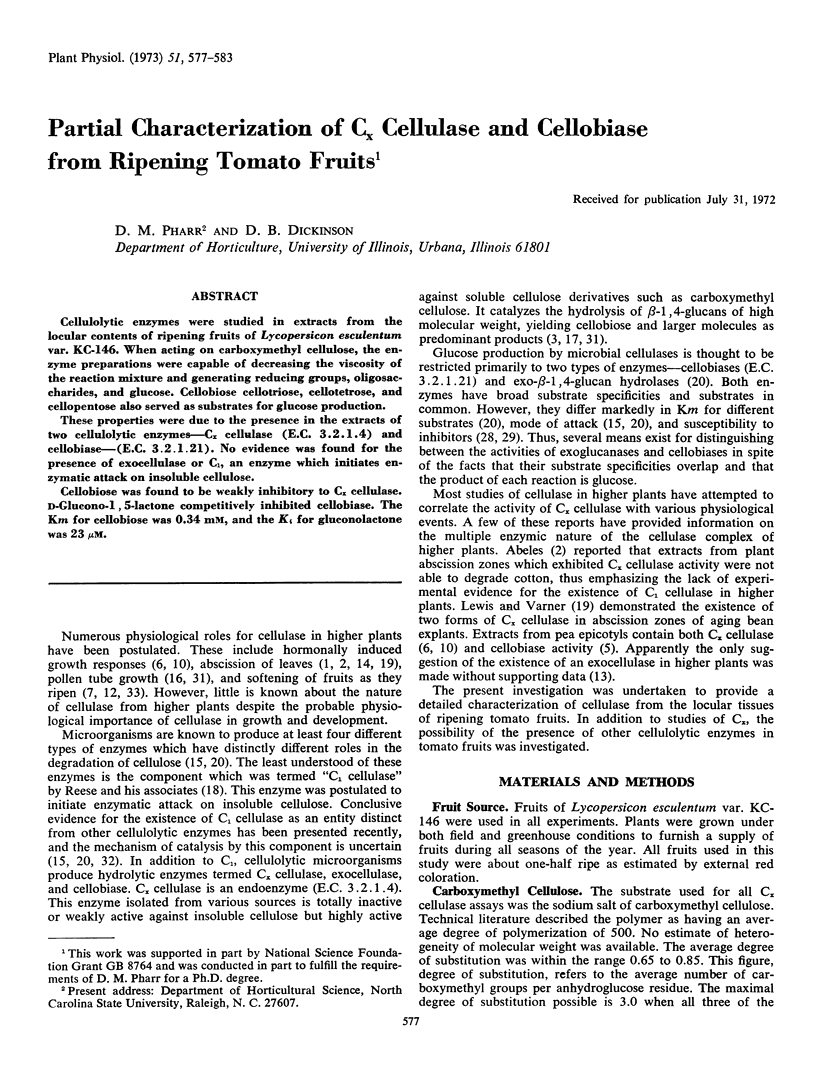
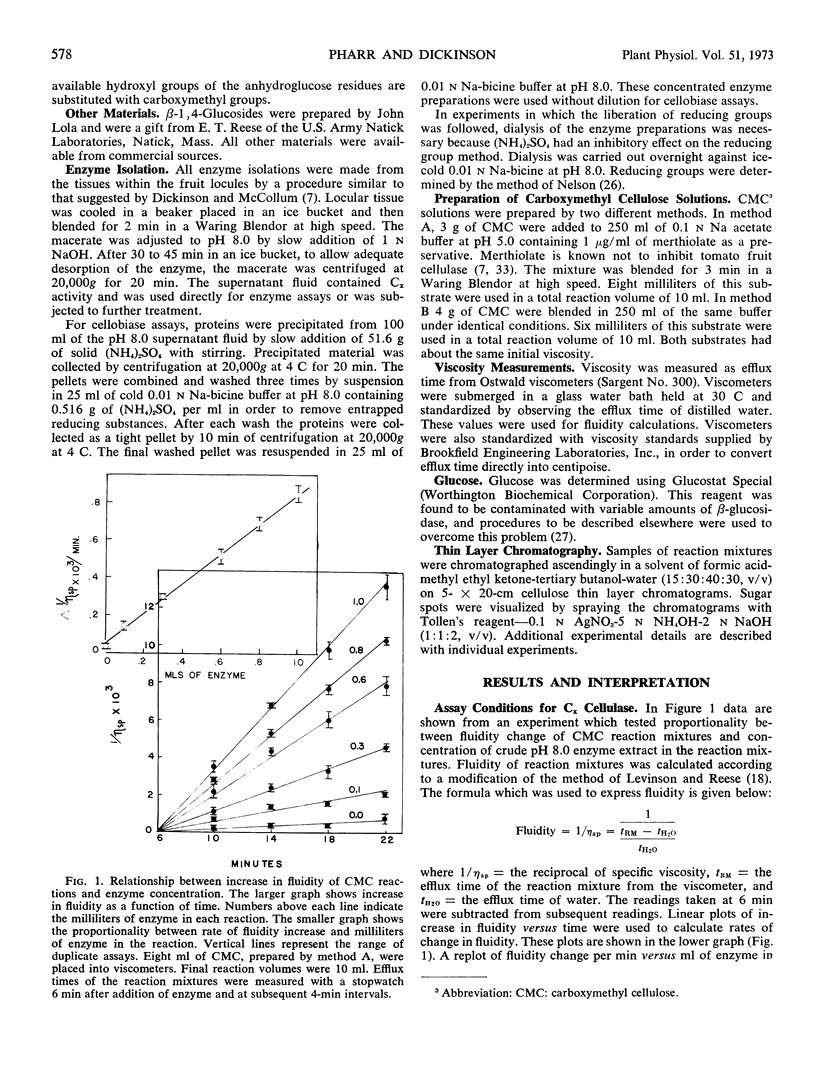

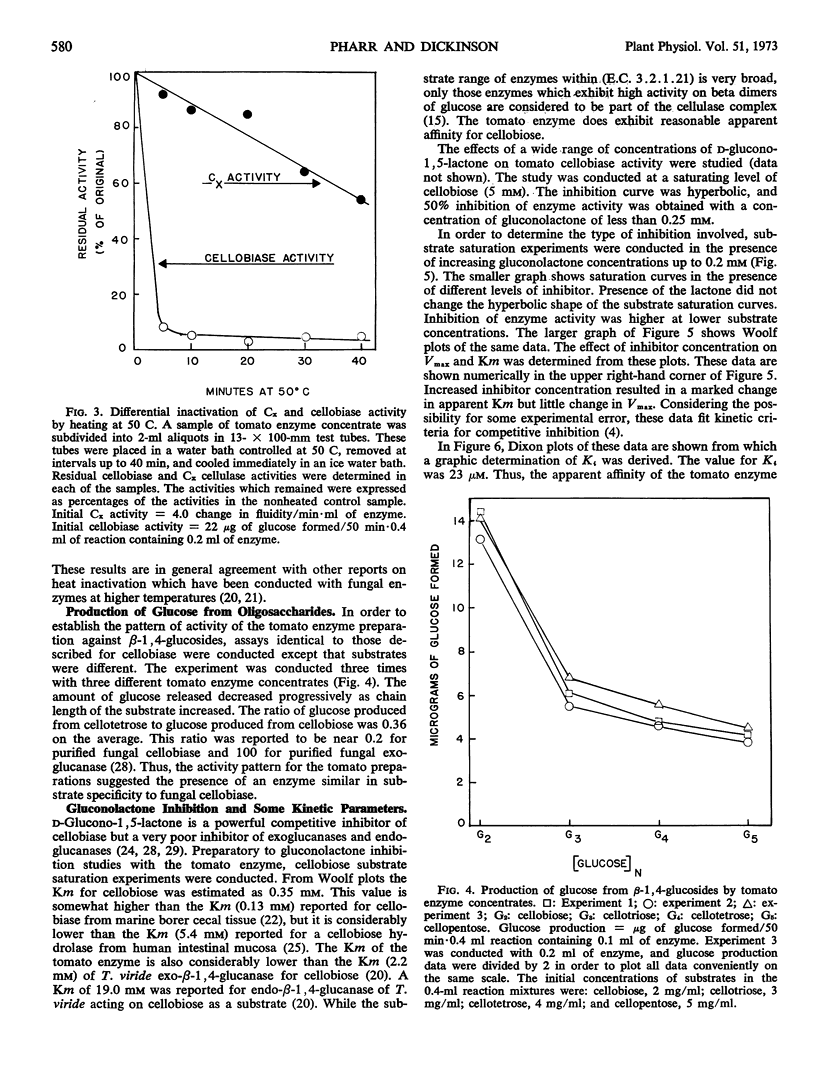
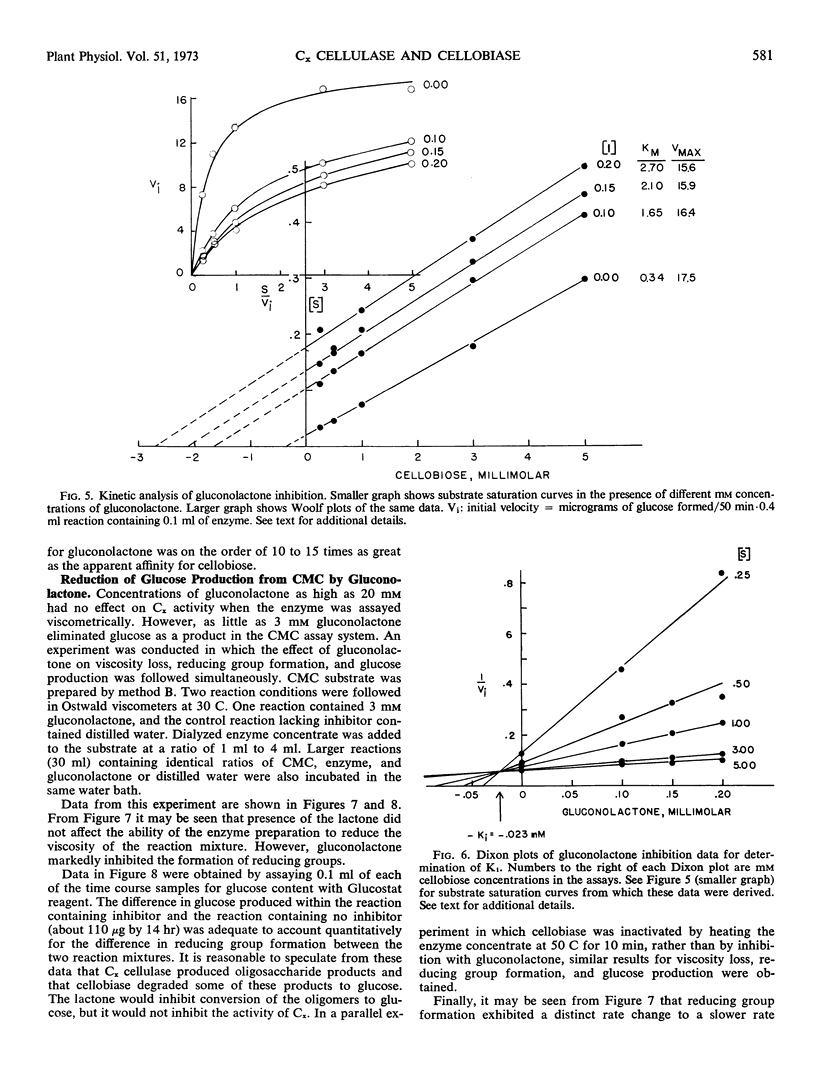
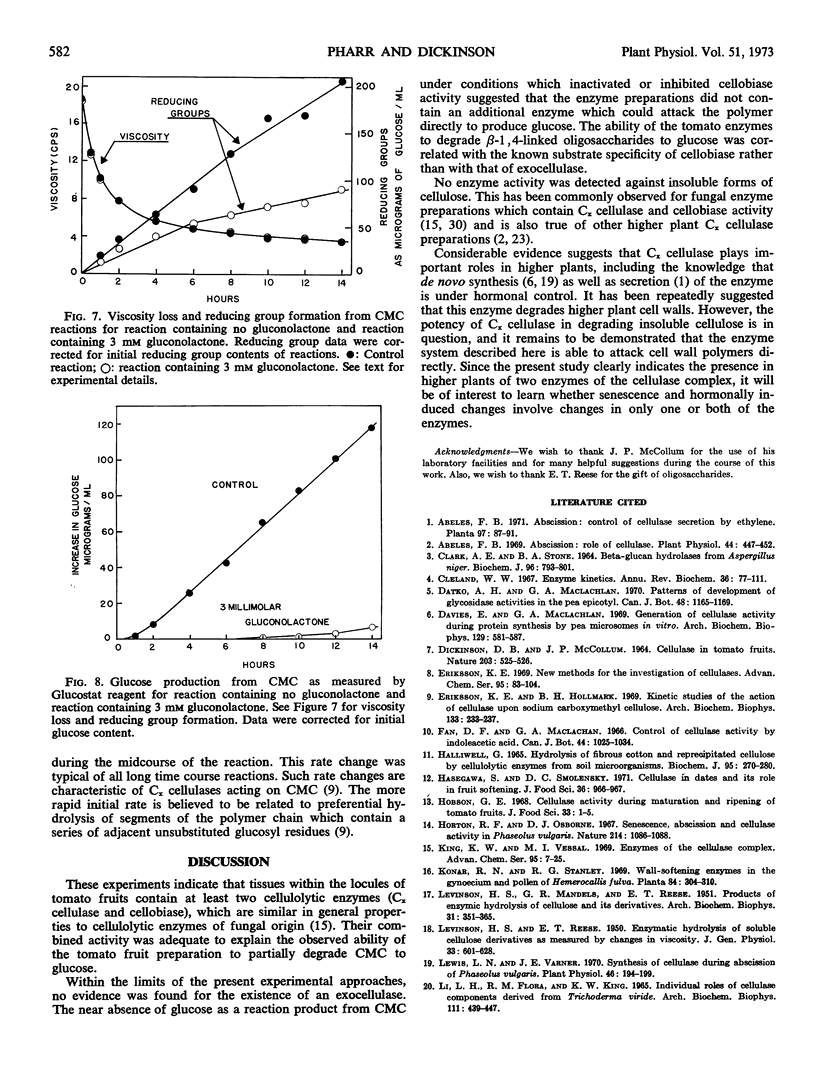
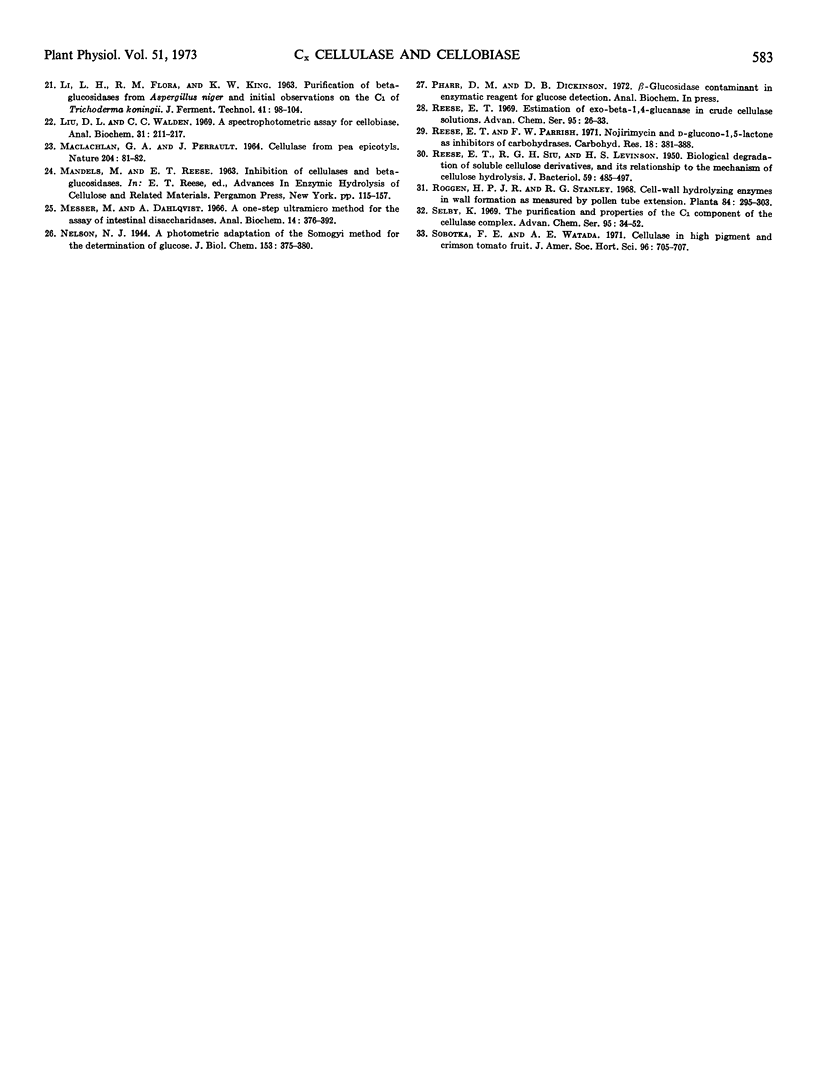
Selected References
These references are in PubMed. This may not be the complete list of references from this article.
- Abeles F. B. Abscission: role of cellulase. Plant Physiol. 1969 Mar;44(3):447–452. doi: 10.1104/pp.44.3.447. [DOI] [PMC free article] [PubMed] [Google Scholar]
- Clarke A. E., Stone B. A. beta-glucan hydrolases from Aspergillus niger. Isolation of a beta-(1-4)-glucan hydrolase and some properties of the beta-(1-3)-glucan-hydrolase components. Biochem J. 1965 Sep;96(3):793–801. doi: 10.1042/bj0960793. [DOI] [PMC free article] [PubMed] [Google Scholar]
- DICKINSON D. B., MCCOLLUM J. P. CELLULASE IN TOMATO FRUITS. Nature. 1964 Aug 1;203:525–526. doi: 10.1038/203525a0. [DOI] [PubMed] [Google Scholar]
- Davies E., Maclachlan G. A. Generation of cellulase activity during protein synthesis by pea microsomes in vitro. Arch Biochem Biophys. 1969 Feb;129(2):581–587. doi: 10.1016/0003-9861(69)90217-3. [DOI] [PubMed] [Google Scholar]
- Eriksson K. E., Hollmark B. H. Kinetic studies of the action of cellulase upon sodium carboxymethyl cellulose. Arch Biochem Biophys. 1969 Sep;133(2):233–237. doi: 10.1016/0003-9861(69)90450-0. [DOI] [PubMed] [Google Scholar]
- HALLIWELL G. HYDROLYSIS OF FIBROUS COTTON AND REPRECIPITATED CELLULOSE BY CELLULOLYTIC ENZYMES FROM SOIL MICRO-ORGANISMS. Biochem J. 1965 Apr;95:270–281. doi: 10.1042/bj0950270. [DOI] [PMC free article] [PubMed] [Google Scholar]
- LEVINSON H. S., MANDELS G. R., REESE E. T. Products of enzymatic hydrolysis of cellulose and its derivatives. Arch Biochem Biophys. 1951 May;31(3):351–365. doi: 10.1016/0003-9861(51)90150-6. [DOI] [PubMed] [Google Scholar]
- LEVINSON H. S., REESE E. T. Enzymatic hydrolysis of soluble cellulose derivatives as measured by changes in viscosity. J Gen Physiol. 1950 May 20;33(5):601–628. doi: 10.1085/jgp.33.5.601. [DOI] [PMC free article] [PubMed] [Google Scholar]
- Lewis L. N., Varner J. E. Synthesis of Cellulase during Abscission of Phaseolus vulgaris Leaf Explants. Plant Physiol. 1970 Aug;46(2):194–199. doi: 10.1104/pp.46.2.194. [DOI] [PMC free article] [PubMed] [Google Scholar]
- Li L. H., Flora R. M., King K. W. Individual roles of cellulase components derived from Trichoderma viride. Arch Biochem Biophys. 1965 Aug;111(2):439–447. doi: 10.1016/0003-9861(65)90207-9. [DOI] [PubMed] [Google Scholar]
- Liu D. L., Walden C. C. A spectrophotometric asay for cellobiase. Anal Biochem. 1969 Oct 1;31(1):211–217. doi: 10.1016/0003-2697(69)90259-0. [DOI] [PubMed] [Google Scholar]
- Messer M., Dahlqvist A. A one-step ultramicro method for the assay of intestinal disaccharidases. Anal Biochem. 1966 Mar;14(3):376–392. doi: 10.1016/0003-2697(66)90280-6. [DOI] [PubMed] [Google Scholar]
- REESE E. T., SIU R. G. H., LEVINSON H. S. The biological degradation of soluble cellulose derivatives and its relationship to the mechanism of cellulose hydrolysis. J Bacteriol. 1950 Apr;59(4):485–497. doi: 10.1128/jb.59.4.485-497.1950. [DOI] [PMC free article] [PubMed] [Google Scholar]


